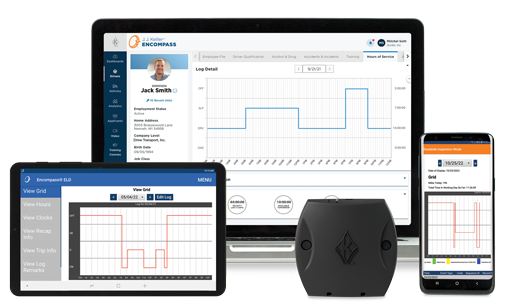Sr. Industry Business Advisor — J. J. Keller & Associates, Inc.
ELD Implementation: The Benefits of Outsourcing
Fleets can benefit from third party installation and training services due to a number of internal and external challenges.
Published On: 02/03/2017


Written by:
Tom Bray
Most of the companies with more than 25 drivers, multiple locations, multiple vehicle classes and types of drivers, and/or private fleets whose core business is not transportation need help with rolling out ELogs to their organization. But that being said, any organization can benefit from outside ELog installation and training services due to one or more of the following challenges:
Limited Resources & Technical Expertise: Not only do ELDs require installation, but also device and system training for drivers and office staff. Companies often choose to use their own maintenance or safety staff to install ELDs, and their safety personnel and middle management for training and policy development. Most of these individuals, however, are already operating at 110% of their capacity. ELD implementation and training is time consuming and challenging, and requires a focused planned effort for a successful rollout. Outsourcing installation and training efforts allows the organization’s key players to focus on the business’s core concerns.
Large Scale Impact to Operations: The transition to ELogs impacts nearly every process and workflow. Once organizations understand the magnitude of that impact, they realize an experienced ELog implementation service can be a tremendous asset. The right partner can diffuse potential interdepartmental conflict, serve as the objective “expert third party,” and take into consideration all department needs. This allows the organization to select the best and most comprehensive rollout, while minimizing impact on current business and customer service.
Timeline Constraints: The ELog transition requires project assignments, identifying start/end dates, resource requirements and creating a location rollout schedule, just to name a few. Planning and coordination are critical, and allowing an outside expert to lead the rollout reduces the risk of unnecessary delay or error.
Technology Challenges: Successful ELD Implementation is the result of three essential components: people, process and technology. Utilizing ELDs may initially present technology and hardware challenges, elements of human error, and the added frustration of meeting FMCSA compliance requirements in time for the ELD mandate timeline. For these reasons, many companies enlist outside implementation services to deal with initial challenges and then reclaim ELog management responsibilities once the implementation phase has passed.
Evaluating ELog Implementation Services
Once an organization realizes the advantages of outsourced ELog implementation, the next step is evaluating potential providers. To ensure an ELog implementation team can successfully transition your organization from initial agreement to full utilization, focus on two primary capabilities.
Systematic Process for Tracking ELD Timeline Project Deliverables and Project Visbility
Select a provider that partners with you to manage your project-defined deliverables and timelines. An implementation provider should create the project schedule with your input, taking into account any constraints you have as an organization and your desired rollout completion date.
Good implementation partners create a project plan that quickly identifies problems and outlines specific measurables for success. The key is visibility and project ownership throughout the process. Regularly scheduled project update calls provide necessary insight into the status of deliverables, key focus items, challenges, and next steps. Frequent communication and alignment of priorities will remain critical to the success of your ELD implementation.
Assigned ELD Project Leader or Point Person
Implementation deliverables are best accomplished with a dedicated resource leading the project team. An assigned project leader keeps the project on schedule and facilitates communication between responsible parties, stakeholders, users, administrators and outside parties. They are also responsible for making sure implementation tasks are identified, tracked and completed according to the project timeline, including:
- Shipment and delivery of hardware and devices
- Data load into your new system
- Identification of ELD installation strategy
- Coordination of driver and vehicle availability for ELD installation
- Coordination of driver and system user availability for training
- Determination of implementation starting location
In addition to these capabilities, the following questions should be considered when selecting an ELog partner:
- What will our user experience look like once we agree to move forward?
- Do you have a documented post-implementation process?
- What resources will be assigned to my account?
- What installation and setup services do you offer?
- What other training and support resources are available?
For most fleets, the transition to ELogs will present challenges, but with outsourced implementation services, the burden to your drivers and operational team can be significantly reduced.
You may also enjoy the following articles:
Sign up for our newsletter!
We'll help you stay on top of regulations, best practices, and fleet industry news. Sign up to receive a monthly email notification with links to our most recent blog articles, free resources, and event invites.
